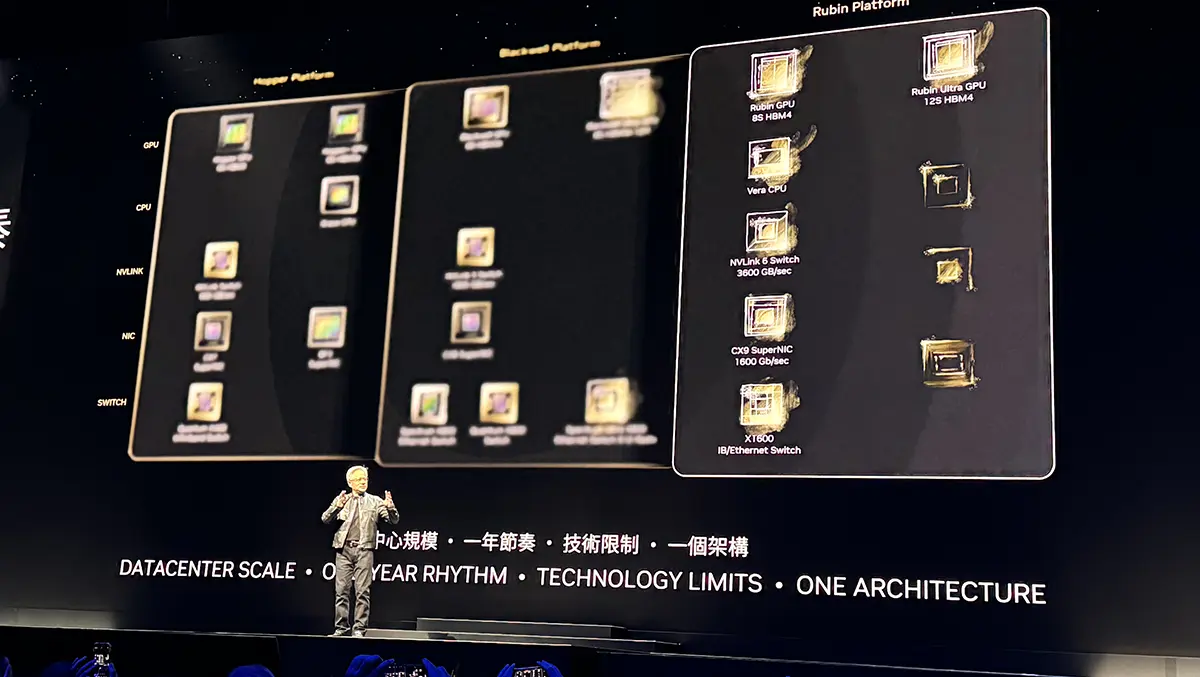
Nvidia's Jensen Huang Unveils Next-Gen Rubin Platform at NTU Keynote
In a keynote at National Taiwan University, Nvidia CEO Jensen Huang revealed the company's next-generation platform, Rubin, ahead of Computex 2024. Despite heavy rain, the event drew thousands of enthusiastic attendees, including key figures from Nvidia's supply chain and Taiwan's tech industry leaders.
Huang's speech was packed with significant announcements, signalling Nvidia's relentless drive in the AI arms race. He introduced the Rubin platform, set to launch new products on a one-year cycle, showcasing Nvidia's speed, influence, and application breadth in the AI sector. The Rubin platform, requiring HBM4 memory, along with the Blackwell Ultra, necessitating eight HBM3e, is poised to lead the next phase of AI technology, leveraging TSMC's 3nm process.
Huang emphasized that the IT industry, worth $3 trillion, is on the brink of an industrial revolution, driven by AI. He noted that Nvidia's advancements in accelerated computing and generative AI are paving the way for this transformation. Huang's demonstration of Nvidia's technological prowess included the Blackwell platform, NVLink technology, and Nvidia NIM for generative AI inferencing.
By 2026, Nvidia's Spectrum X CX9 1600G SuperNIC is expected to scale up to millions of GPUs, with over 200 models of Nvidia RTX AI PCs already achieving remarkable performance in generative AI tasks. Huang addressed criticisms regarding the high cost of Nvidia's equipment, explaining that despite a 100-fold increase in computation speed, the power consumption only triples, and the cost rises by 50%. He asserted that Nvidia's CUDA software enhances CPU offload and accelerates computation, making their products a cost-effective solution for advanced computing needs.
The keynote also showcased Nvidia's vision for the future of AI, termed "physical AI." Huang predicted that robotics would become integral to all factories, with robots orchestrating the production of robotic products. He illustrated this vision with video clips of autonomous robots in the Omniverse, where digital twins facilitate simulations and reinforcement learning.
Huang also revisited Nvidia Earth-2, a digital twin simulation model for weather predictions and disaster prevention, previously introduced at GTC. This time, Huang's AI digital twin was narrated in Chinese, adding a local touch to the presentation.
Towards the end of the event, Huang expressed his gratitude to Taiwan, calling it the bedrock of the AI revolution. A video tribute highlighted the crucial role of Taiwan's partners in Nvidia's journey from accelerated computing to AI. "Every chip and every computer described stories of hard work and pursuit of perfection. You are the unsung heroes, the pillars of the world," Huang remarked.
Huang's early arrival in Taiwan allowed him to engage with local supply chain partners and attract media attention by exploring local culture, including a visit to a Taipei night market with 92-year-old TSMC founder Morris Chang.
Competitors such as AMD chair Lisa Su, Intel CEO Pat Gelsinger, and Qualcomm CEO Cristiano Amon also delivered keynotes at Computex Taiwan 2024. This series of keynotes continued to highlight the advancements and competitive dynamics within the AI and semiconductor industries.
.webp)

